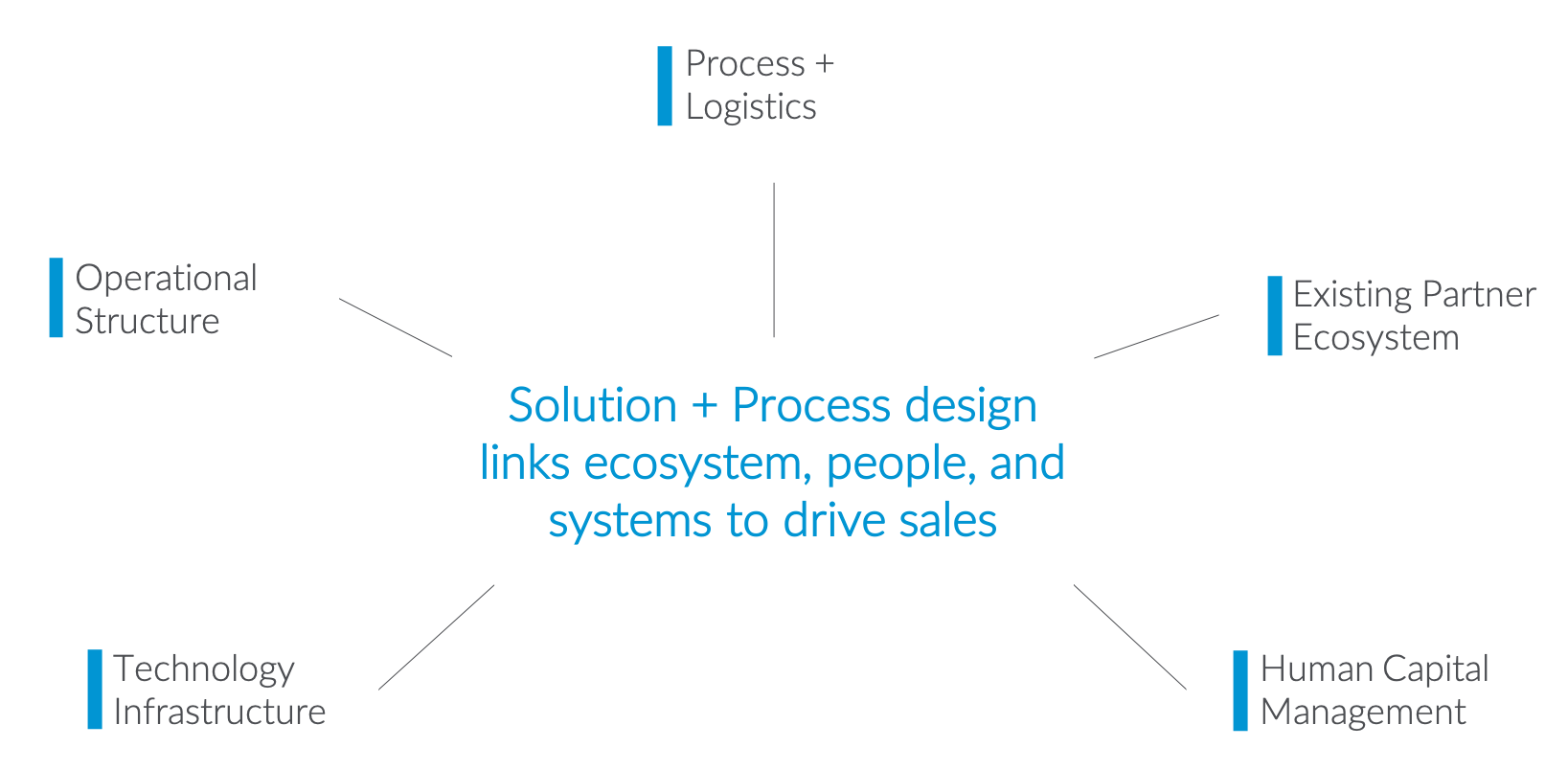Humanizing the Retail, E-tail, and Direct-to-Consumer Experience
Over the last year, we as consumers have all participated in e-tail, mostly because we had to. The only way we could quickly and safely get the items we needed was to order them online and have them delivered to our homes. As we’ve become accustomed to new ways of making purchases, many of us will continue to use these methods of purchasing even after we resume in-person shopping. In fact, an Ernst & Young survey found that 42% of consumers believe the way they shop will fundamentally change. Others will welcome the return to buying in person. (And I know I am not alone in enduring a few online purchase blunders that indicate some products are just better bought in person.)
As these new, and mostly online, shopping trends took off during the pandemic, many experts forecasted and charted the changes out on a significant growth curve based on 2020 purchase patterns. However, as stores have reopened, pent-up demand for physical shopping has caused a massive surge in the brick-and-mortar side of retail as well. People really wanted to get out of the house and into the stores to shop. Anecdotally, as my wife and I visited retailers in our area to shop, we found big crowds and big lines. Everywhere we went were lines of 20 to 30 people waiting to make a purchase.
Apparently, the U.S. population is on a pervasive shopping spree. My personal experience has been that stores are filled with shoppers wanting to buy stuff and retailers are low on inventory. When we ordered a new sofa, we were told the retailer was out of stock and had no inventory, and that it would take 6 to 12 weeks to get anything! Not to mention there is a shortage of workers right now and many manufacturers, distributors, shippers, and retailers can’t get the people they need to keep the supply chain flowing. Of course, the main contributing reason for the empty shelves we are seeing is the pandemic’s effect on the global economy.
At the same time, the National Retail Federation recently predicted that we’re about to see “the fastest growth that we’ve seen in this country since 1984” in retail sales. It’s important to note that this prediction includes both e-tail and brick-and-mortar. And aside from sheer pent-up demand, much of the shopping surge is fueled by Americans who are now flush with stimulus money.
Retail Sales: Up, Up and Away
Overall, this is a good trend for all of us. Retail drives a major portion of our economy, contributing around $4 trillion to the GDP and employing 52 million workers, amounting to one in four jobs in the U.S. Even as e-tail sales rose from 20% in 2019 to 25% in 2020, brick-and-mortar still represents the other 75% or $3 trillion—a massive number—and most retail workers belong to brick-and-mortar.
This helps explain why brands with a physical presence are making huge investments in technology to increase their electronic footprint, and on the other hand, many e-tailers and online brands are actually moving in the opposite direction by piloting physical locations. (Even Amazon started doing this years ago.) The one key aspect that all these retailers’ efforts have in common, regardless of their selling methodology, is a direct connection with the consumer. In her bigcommerce.com blog, Corinne Watson points out a few key reasons why a direct-to-consumer (DTC) approach makes sense:
• Less reliance on third parties
• Fewer contract negotiations
• Less limitations on branding and fulfillment
Connect With Consumers, Control Your Brand
I venture to add another advantage: Ultimately, connecting directly to the consumer gives retail brands complete control over the way their brand is viewed and experienced. This presents a wealth of benefits for brands, since now they become the main attraction. However, it also comes with challenges. As brands move into DTC, they also have more competition with all the other brands going this route at the same time. For instance, I’m sure you’ve heard of the direct-to-consumer brand, Tesla, (Elon Musk and his uniquely designed electric cars), but you might not have heard of several of the other DTC auto brands like Lucid or Rivian. Even if you have heard of them, I guarantee that you’ve heard more about Tesla.
First-to-market brands such as Warby Parker glasses and Purple mattresses are able to compete successfully, but as many other DTC brands try to duplicate their success, they struggle because they are late-comers. And interestingly, despite the initial success of most of these first-to-market DTC brands (and being marketed and sold via online, digital and electronic channels), nearly all of them have also made moves into the physical space, opening retail locations for shoppers to visit in person. The reason is that there are some things that we just need to see, physically touch and even try out before we buy. There are product features and functions and “feel” that we may not know we want until we see it in person.
Consumers Want a Good Online and Offline Experience
Here’s an example: When you go to Costco.com, you probably don’t spend hundreds of dollars on every visit to the site. In fact, you probably just order what you went to the site for and then move on; but when you go to a physical Costco it’s a different story altogether. My guess is you spend some time looking around and generally walk out with a few things you didn’t plan on getting. Of course, it might be noted that Amazon drives this same behavior online.
The point is that consumers can and actually do express a desire to stay connected and enjoy experiences with brands in different ways in. Consumers want to conduct both online and physical shopping, dependent on a variety of factors such as pricing, the product category, and individual preferences for convenience. At the end of the day, I’m not buying the same stuff on Amazon by impulse that I put in my cart when I’m in a Costco. Both are fun and valuable experiences, but they are different.
Even brands that are sold successfully through traditional retail markets are developing ways to bypass the retailer and look directly to the consumer to drive their brand. And that is actually both easier—and harder—to accomplish than ever before:
It’s easier because you can quickly market your brand to consumers directly online and through social media. You can get the word out there. You can produce YouTube videos and Instagram ads and find ways to connect directly.
It’s harder simply because now it’s you versus everyone else competing for consumers’ attention.
So how do you stand out? This is one of the problems that I am tasked to solve for major retail brands every day in my role at MarketSource. I help to determine human capital strategies to drive brand awareness and sales.

Customers Are People, Too
It can be a complex process to “reinvent the wheel” when it comes to direct-to-consumer. It’s helpful to have a pre-established roadmap that will logically lead to success, particularly because, in essence, the process requires you to become your own retailer. If you are already a retailer, you will still need to identify places and develop approaches to connect with consumers—for instance, in pop-up shops.
Connecting directly with consumers is also focused on the experience, and that starts with the human experience, even if it’s created through a digital interaction. As an example, MarketSource has helped brands to directly connect with consumers, virtually, in a variety of innovative ways. Sometimes it’s as simple as placing a link on a brand’s website that says, “Chat with an expert now” that connects consumers to someone who can have a two-way video chat with them about the product they’re interested in. We’ve also staffed pop-up shops in busy train stations where consumers can experience a product for the first time, and once they decide to buy the product, have it shipped the next day to their home. Ultimately, it’s all about a positive, interactive experience that establishes a person-to-person relationship.
Sure, artificial intelligence bots and other leading-edge marketing tools can attract consumers, but it’s still about giving them a great human-based brand experience. The key is assessing the ideal way to accomplish this for you and your brand.
Creating a Seamless, Engaging Buying Experience
The first step is to accept that there is no exclusively e-tail, no exclusively physical retail anymore. There is no hard demarcation separating the two; the lines are blurred. They are complementary pathways that have merged toward a single desired result: to create consumer interactions where retailers have the opportunity to make connections and deliver, in a confluence of the overall human experience.
Although we live in an omnichannel world, consumers are gradually becoming less concerned about your “channels” and increasingly more interested in having a good seamless buying experience with your brand, whether it’s conducted directly with your brand or through a retailer. Phygital, if you will!
The next step is to figure out how to make the experience organic and real. (Hint: You definitely want to steer clear of call centers staffed with people acting like robots reading from a script.)
For many years and long before the recent global rise of virtual retailing, MarketSource has been successfully bringing a human touch to the digital world. We discovered that when we assist retailers in engaging with people and truly conversing with them, we turn prospects into customers who ultimately buy more and feel better about the experience. Consumers are responding so positively to these virtual connections that they are in more demand than ever.
One of the most successful actions to date, surpassing our expectations and those of our clients, is the implementation of an in-store POP that connects consumers to a virtual expert, often in a live video chat. Consumers can access the chat through a variety of means, but particularly QR codes. The consumer scans a QR code on their cell phone to connect to a product expert with whom they can chat in real time. We expect this concept to remain popular beyond the current post-pandemic shopping era and well into the future because it satisfies consumers’ expectation of instant answers to their questions and their craving for direct engagement with brands. And, in light of current staffing shortages, with retail associates stretched thin, it offers the perfect solution for assuring customers stay connected to your brand while also staying loyal to the retailer.
When the customer connects to a direct-to-consumer brand expert, the consumer is more likely to buy products that are not currently on the shelves, yet are on the retailer’s website. When they have a satisfying conversation with a real expert, they often want to buy up to a better product that might not be in-store but may only be available online. This brings it all together—a great experience, upselling, higher ticket prices, less strain on the retail staff, more connection to the brand. The brand, the retailer, and most importantly the customer all win.
Direct-to-consumer will continue to evolve and expand in new and surprising ways and MarketSource continues to stay one step ahead to ensure we can make capitalizing on these opportunities easy for our clients. Want more information on how we can help? LET’S TALK! >>

